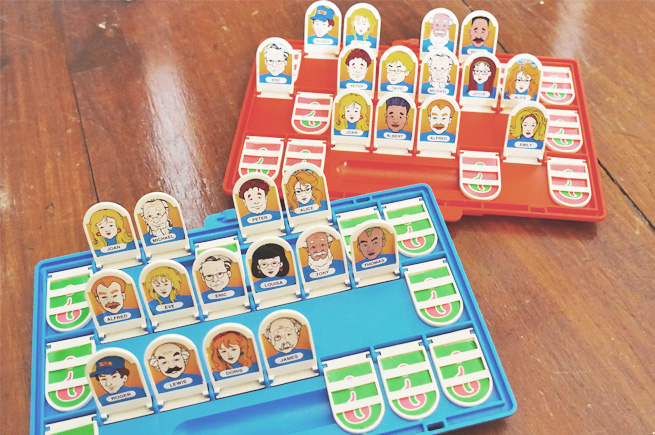You have already heard the argument: bring the missing voices into the room.
Simulate the ones who do not show up in your sample, who reject your category, who roll their eyes at your screener (if you missed part one, check it out here 👉 Simulate the Refusal Part 1: AI Voices from the Margins of Research).
But what happens next? This second part is about building. Not with what tested well. Not with what aligned.
With what misfired, glitched, stayed silent or refused to play along. This is not about replacing your research. It is about enriching it.
You can use these prompts with your own survey data, transcripts or coded outputs, running them through large language models using retrieval-augmented generation (RAG), fine-tuned counter-panels or scoped synthetic personas.
- Each section uses a different strategy: contradiction, silence, sarcasm, future tension.
- Each one starts from friction and refusal.
- Each one offers a way to surface gaps, generate alternatives and reframe what you think you have learned.
It is not a golden bullet. It will not tell you what to do. But it might tell you what your data has not.
And that is enough to begin again.
🧱 Start with contradiction
Contradiction is not something to clean up.
It is where culture lives.
Raymond Williams reminded us that culture is always in motion, shaped by clashing forces. Stuart Hall told us to read against the grain, not for alignment but for tension. Contradiction is not noise. It is structural.
Prompt Idea: Attached is a set of survey data where five distinct personas emerge, but their needs, behaviours and worldviews conflict completely. Using these personas, generate a service concept that only functions if all five perspectives remain intact. Do not simplify. Do not smooth. The goal is to hold opposing forces in one usable system.
Prompt Idea: Attached are interview transcripts from a cross-cultural study. Select two participants who show irreconcilable views on trust and authority. Simulate a co-design session where they are forced to build a shared solution to a public health challenge. Preserve the tension in the output.
🕳 Design from silence
Silence is not the absence of data.
It is what power does not want recorded.
Michel-Rolph Trouillot wrote that history is shaped as much by what is silenced as what is said. Gayatri Spivak asked what happens when the subaltern speaks in a language we have made unintelligible. Silence is not empty. It is deliberate.
Prompt Idea: Attached is a transcript from a depth interview. The participant consistently skips or deflects questions about money, family and mental health. Using this document, identify what topics were avoided and generate a research hypothesis based on the patterns of absence and hesitation.
Prompt Idea: Attached are open-ended responses from a recent survey. A noticeable group left blank sections, especially around political views and identity. Map the silence. Propose a new research direction based on what participants avoided, not what they shared.
🔁 Let refusal rewrite the brief
You cannot centre refusal while keeping the original structure intact.
James C. Scott taught us that refusal is often quiet, tactical and deliberate. Sara Ahmed reminds us that diversity does not mean much if it requires assimilation. If the frame does not shift, the participants have no reason to engage.
Prompt Idea: Attached is a research brief exploring consumer attitudes toward energy-saving technology. Also attached are transcripts from participants who expressed scepticism or rejection of the topic. Rewrite the brief from their perspective. Include new goals, priorities and framing language.
Prompt Idea: Attached is a research brief. I have also included synthetic profiles of people who typically avoid participation. Rewrite the brief based on their logic. Let them identify their own priorities, preferred research approach and problem definition.
🧪 Sarcasm means something
Sarcasm is a shield.
It kicks in when speaking plainly no longer works.
Judith Butler taught us that language can wound but also protect. Lauren Berlant showed how we cling to broken systems out of cruel optimism. When sarcasm shows up in research, it is not decoration. It is defence.
Prompt Idea: Attached are quant survey results including sarcastic or dismissive comments about a concept test. Analyse these responses and extract the emotional triggers underneath (frustration, distrust, alienation). Use those as the foundation to design a new version of the concept.
Prompt Idea: Attached are interview transcripts featuring ironic, humorous or defensive language. These participants are resistant but not disengaged. Simulate what kind of product, brand or communication could build trust with them. The tone must reflect their language, not neutralise it.
🧬 Hallucinate futures
Most futures are just the present, polished.
Fredric Jameson wrote that it is easier to imagine the end of the world than the end of capitalism. Ruha Benjamin and Walidah Imarisha remind us that real futures begin at the margins, not in labs or boardrooms, but in refusal and reimagination.
Prompt Idea: Attached is a dataset combining optimism about AI with deep concern about control, bias and exploitation. Build a speculative product or system that holds both views. It must reflect tension rather than resolve it.
Prompt Idea: Attached are transcripts from young people living in precarious conditions. They talk about surveillance, breakdowns in infrastructure and mutual aid networks. Simulate a future where their worldview is dominant. Describe what that future would look like and what it would reject.
Build from what the brief could not handle
Most research is built to survive stakeholder approval.
Not contradiction.
Not refusal.
Not silence.
If the goal is transformation, not validation, then I need to build from the material the project tried to clean up.
Final trace
I do not want polished insight.
I want wreckage I can work with.
I want refusal turned into architecture.
I want what was not said, what did not test well, what did not fit.
That is where the next version starts.










